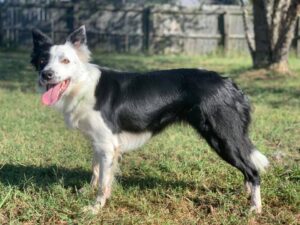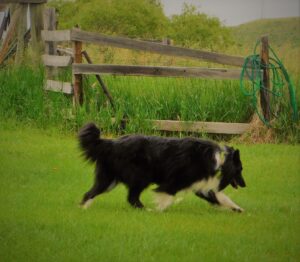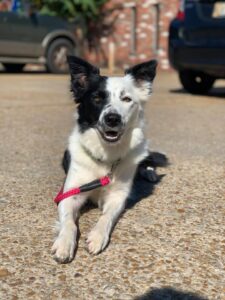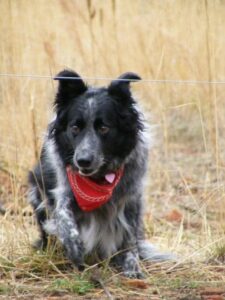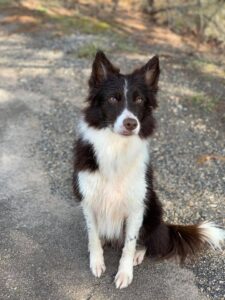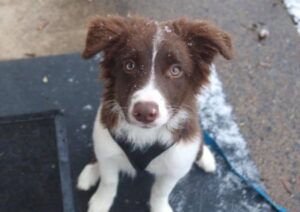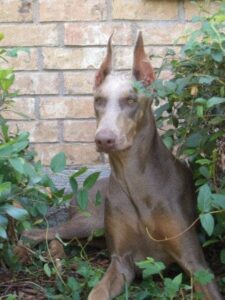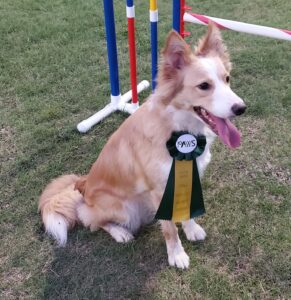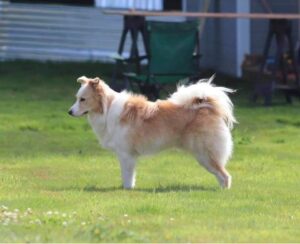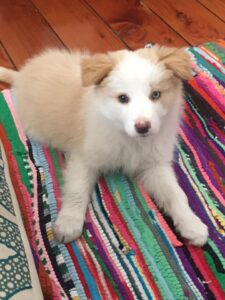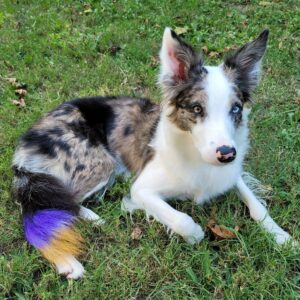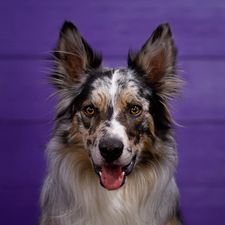Solid Colors
Black/Brown
Black (dominant black)
Black dogs have the genotype of B_. They are good example of the simple dominant/recessive. A dog that has BB or Bb will appear black. If the dog is black but has not been color tested and/or the other allele is unknown, we write the genotype as B_.
Brown (red, chocolate, liver)
Brown is the recessive form of black. A dog must have two copies of the brown gene to appear brown. This is denoted as bb. Brown based dogs will not have any black pigment anywhere on their body. The brown gene dilutes any black color to brown.
An easy way to tell the difference between black and brown is the nose. A brown dog cannot have a black nose. Black dogs may have a nose that has faded or appears lighter in color than a true black, but they are still black.
Dilute
The dilute gene (dd) is a simple recessive/dominant as well. If a dog carries only a single copy of dilute (Dd), they will appear a normal color, such as brown or black. When a dog is homozygous or carries two copies of the recessive gene (dd), the dog’s pigment will be diluted to a lighter color.
The dilute color is often associated with a condition called Color Dilution Alopecia (CDA). Not every dog with dilute coloring will have CDA, but many do. CDA occurs when pigment is improperly distributed in the hairs. This leads to breakage and hair loss. CDA is thought to have a genetic component, but no specific gene has been isolated yet. The Weimaraner breed is exclusively dilute (B_dd, bbdd), but CDA is extremely rare. By contrast, when Weimeraners are crossed with other breeds, such as Labrador Retrievers (i.e. silver labs), the dilute offspring often have severe CDA. Other breeds with frequent CDA include Dobermans, chihuahuas, and dachshunds. This trend supports the theory of CDA being influenced by genetics.
CDA has been reported in border collies, but it is important to note that not all dilute dogs will have CDA. Symptoms range from bald ear tips to severe alopecia. If you are getting a dilute dog of any breed, it is recommended that you discuss with their breeder the incidence of CDA in their pedigree.
Blue (slate, gray)
Blue is the dilute form of black (B_dd). All of the black pigment on the dog will be diluted to a “blue” color. This color ranges in shade from a light grey to nearly black.
Lilac (lavender, isabella, fawn in dobermans)
Lilac is the dilute form of brown (bbdd). It dilutes all brown pigment to a paler color. Because lilac dogs have a brown base, lilacs will have no black pigment anywhere on their body.
Champagne
This is a term often used to describe dogs that are both dilute and gold (ddee).
Gold/Melanistic Mask
The gold color gene (ee) is separate from the brown gene (bb) explained above, but both can have overlapping phenotypes (appearances). This gene has three different alleles, unlike the previously discussed genes, which only have two alleles. E is one of the dominant alleles and has no effect on the dog’s appearance (E_, EE, Ee, EE^m). E^m is the other dominant allele and gives the dog a mask (E^m_, E^me, EE^m, E^mE^m). Two copies of the recessive allele (ee) give the dog gold color.
Gold (red, Australian red, yellow, wheaten)
The gold color occurs when a dog carries two copies of the recessive ee gene. Gold dilutes all body pigment to a yellow color. This means that gold covers up black, blue, red, lilac, merle, etc. The dog’s base color can be identified by their nose color. A black nose indicates a black based dog and a brown nose indicates a brown based dog. Dilute based dogs can be trickier to identify depending on their specific nose shade.
Gold has a wide range of shades, from fox red to pale cream. It is responsible for the color of Golden Retrievers (BBee) and yellow labs (B_ee, bbee). In border collies, this color is usually referred to as gold or Australian red to avoid confusion with the “true” red (bb).
Melanistic Mask
The melanistic mask is a marking characterized by black pigment on an otherwise light dog. This marking is seen most commonly in breeds that are predominantly fawn/tan, including Pugs, Mastiffs, Belgian Malinois, and French Bulldogs. This gene will not express on a solid black or brown dog (the mask is the same color as the rest of the dog). The mask gene is dominant and is denoted E^m. This means any dog with at least one copy of the E^m gene (EE^m, E^me, E^mE^m, E^m_) will have a mask (unless the mask is hidden by a solid color, such as black or brown). A dog that carries one or two copies of the mask gene cannot be gold, as gold requires two copies of the recessive e.

